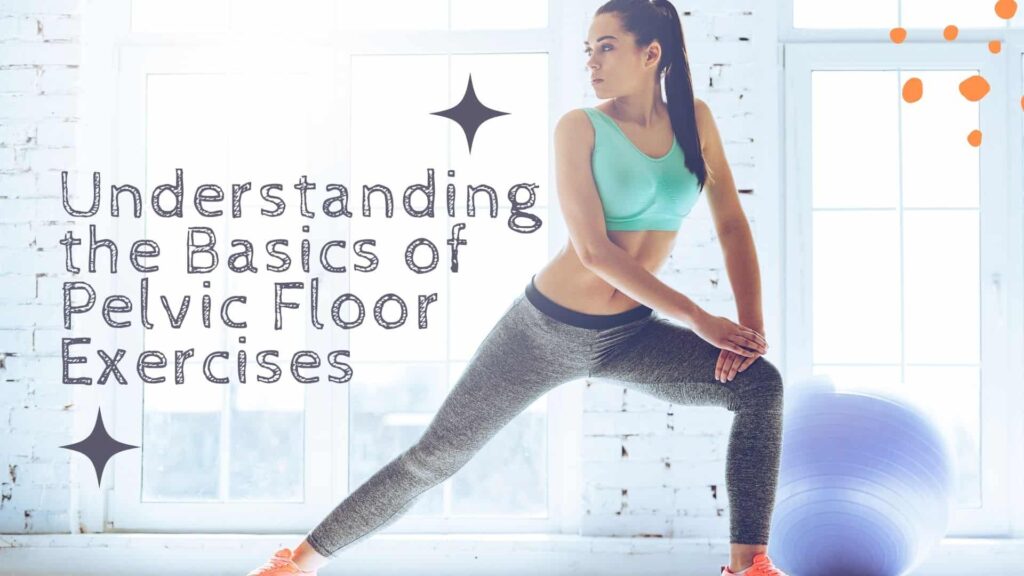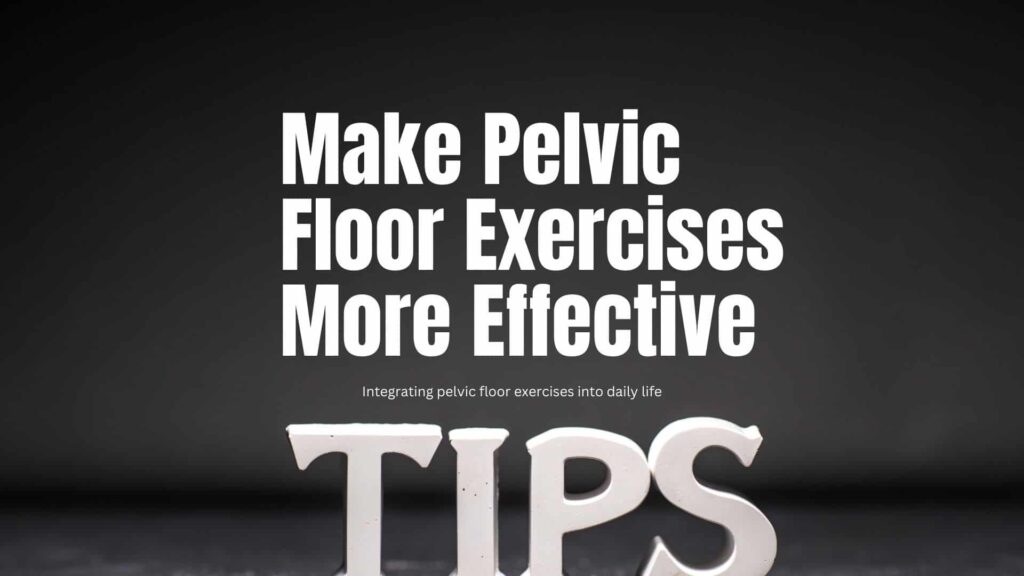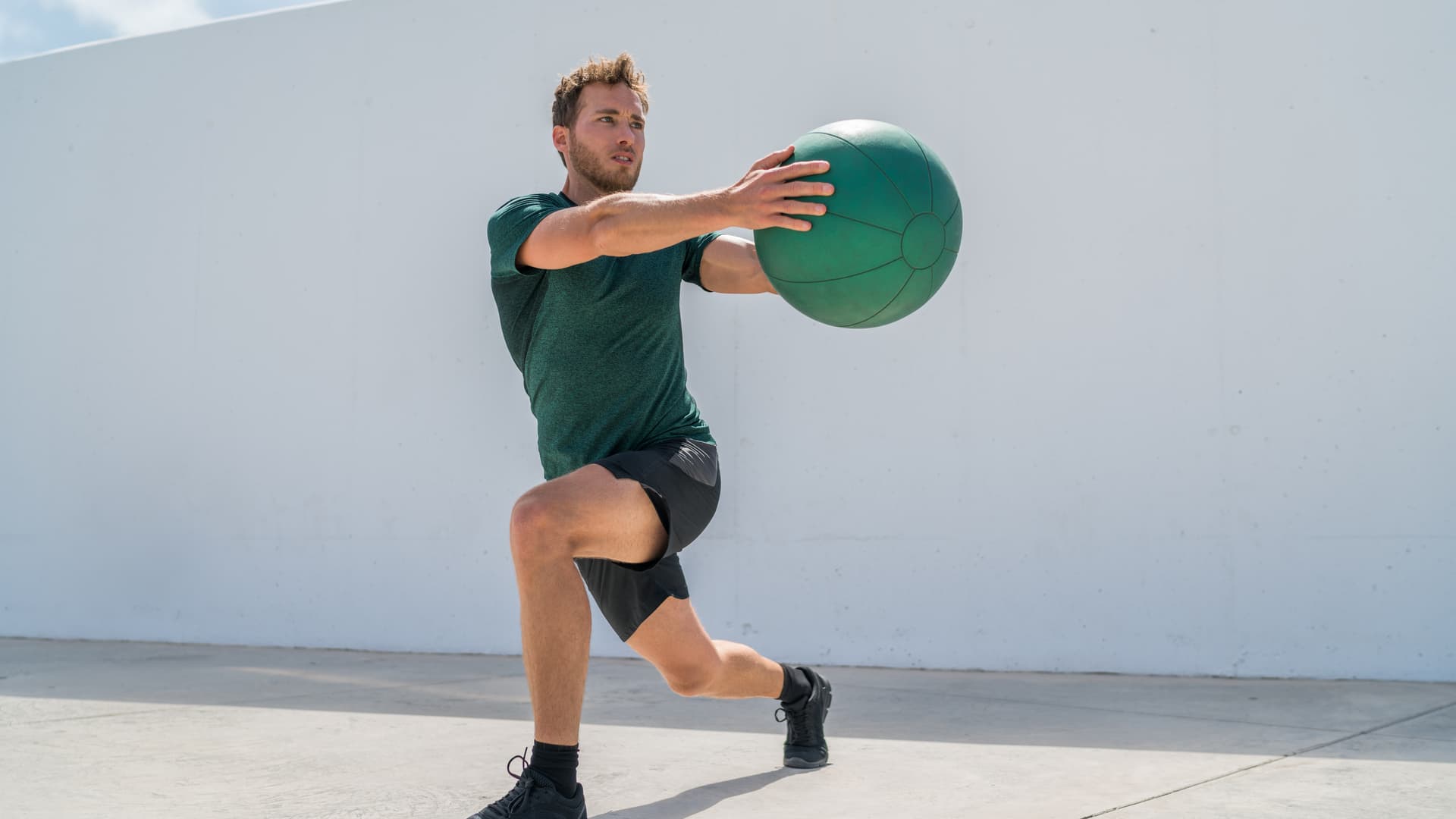Pelvic Floor Exercises – What You Need to Know?
The journey to optimal health is multifaceted, with an array of practices to consider and habits to adopt. In the search for wellness, the pelvic floor is one area that often goes unnoticed but plays a significant role in our overall wellness. This network of muscles, ligaments, and tissues holds much potential for boosting health and enhancing the quality of life when properly cared for.
Pelvic floor exercises are often overlooked but are crucial to our overall well-being. These exercises, also popularly known as Kegel exercises, strengthen the muscles of the pelvic floor, which support the bladder, uterus, rectum, and other pelvic organs.
Research has shown that regular practice of pelvic floor exercises can help with urinary incontinence and pelvic organ prolapse and even enhance sexual health. So, let’s explore the intricate world of pelvic exercises, shedding light on their numerous benefits and how to incorporate them into daily life.
Key Takeaways
- Pelvic floor exercises, also commonly known as Kegels, are important for both men and women to maintain overall pelvic health.
- These exercises can alleviate symptoms associated with common pelvic floor disorders such as pelvic pain, urinary incontinence and pelvic organ prolapse.
- Regular practice of pelvic floor exercises can strengthen the muscles, enhance bladder control, improve sexual function, aid in postpartum recovery, and prevent future pelvic problems.
- Identifying and engaging the correct muscles is crucial when performing these exercises to maximize their effectiveness.
- It is important to consult a physiotherapist for proper technique and consider other treatment options if exercises alone are insufficient.

Understanding the basics of pelvic floor exercises
Pelvic floor exercises are crucial for strengthening the muscles that support the bladder, uterus, small intestine, and rectum, collectively known as the pelvic floor. These exercises involve contraction and relaxation of the pelvic muscles, similar to how one would stop the flow of urine or hold in gas.
Pelvic floor muscles are especially crucial for women during and after pregnancy but are equally important for men, particularly as they age. Understanding the basics of pelvic floor exercises is essential to overall health and well-being.
A strong pelvic floor can contribute significantly to improved quality of life, whether you’re experiencing specific issues like incontinence or simply seeking to enhance your overall physical health.
Regularly performing pelvic exercises can help combat urinary incontinence, fecal incontinence and even improve sexual health. Regular and consistent practice of pelvic floor exercises can lead to noticeable improvements. Still, as with any exercise, seeking professional advice is important to ensure these exercises are done correctly and effectively.
In the next sections, we’ll simplify pelvic floor disorders and spotlight the importance and advantages of pelvic floor exercises for the disorders.

Common pelvic floor disorders and problems
Pelvic floor disorders affect the intricate web of muscles that support your pelvic organs, playing a vital role in everyday functions. Some of the more common conditions include:
- Urinary incontinence
- Fecal incontinence
- Pelvic organ prolapse, which can include Cystocele, Urethrocele and Rectal prolapse
- Urinary frequency or urgency
- Constipation or a sensation of incomplete defecation
- Pain with sex
- Pain with urination or bowel movement
- Erectile dysfunction
- Myofascial pelvic pain syndrome
Factors contributing notably toward these conditions range from pregnancy and childbirth stress, prostate cancer treatment in males, ageing, obesity, or consistent straining from constipation that weakens the muscular structure over time.
It’s worth noting that symptoms often vary drastically based on what type of dysfunction one has. Understanding how these disorders occur gives you an edge for early detection. Focusing on pelvic floor strengthening exercises can be employed as proactive measures against such problems.

Benefits of pelvic floor exercises
Pelvic exercises play a pivotal role in maintaining overall pelvic health. These carefully designed movements enhance control and strengthen the often-neglected pelvic floor muscles.
Strengthening the pelvic floor muscles through targeted exercises like pelvic floor muscle training (PFMT) offers numerous benefits integral to overall health and well-being. Performing such routines not only mitigates the risk of urinary incontinence but also aids in core strength enhancement and alleviates symptoms associated with various other pelvic floor problems.
Not just limited to women’s health issues, men also experience significant advantages from pelvic floor exercise routines for their overall health. Benefits of pelvic exercises for women and men include:
- Improved bladder and bowel control
- Prevent and treat pelvic organ prolapse
- Enhanced sexual function and reduced pain during intercourse.
- Support pregnancy and childbirth by helping prepare the body.
- Recovery after prostate surgery in men and gynecological surgeries in women.
- Improve core strength and stability for better posture and spinal alignment.
- Increase social confidence and quality of life by improving bladder and bowel control.

Who can benefit from pelvic floor exercises?
Pelvic floor exercises benefit many individuals, regardless of gender or age. Some specific groups that can benefit from pelvic exercises include:
- Men and women of all ages.
- Women during pregnancy and postpartum.
- Older adults.
- People with Incontinence.
- Pre and post-pelvic or abdominal surgery.
- People with pelvic pain or dyspareunia.
- Athletes performing high-impact activities and heavy lifting.
- Individuals aiming to improve sexual function.
- Individuals seeking to improve core strength and stability.
Remember, it’s always advisable to consult a healthcare professional before beginning any new exercise regime, including pelvic floor exercises, to ensure they are safe and appropriate for your individual health circumstances.

How to identify your pelvic muscles?
To effectively perform pelvic floor muscle exercises, it is important first to identify your pelvic muscles. Here’s how you can do that:
- Sit comfortably and relax your body, especially your abdominal muscles.
- Take a deep breath and focus on the area between your tailbone and pubic bone.
- Imagine that you are trying to stop the flow of urine or prevent passing gas.
- Squeeze the muscles in that area without tensing your abdomen, buttocks or thighs.
- You should feel a gentle tightening or lifting sensation in the pelvic floor.
- Hold the squeeze for about 5 seconds, then release and relax for 5 seconds.
- Repeat this process ten times, aiming to increase the duration of each squeeze gradually.
Know if your pelvic floor needs strengthening or lengthening
Not all pelvic floors are created equal and do not have similar issues – some need strengthening, others need lengthening. To determine if your pelvic floor needs strengthening or lengthening, assessing your pelvic floor strength and function and paying attention to symptoms is essential.
Common signs of a weak pelvic floor include accidental urinary leakage when coughing, sneezing, laughing, exercising, needing to get to the toilet urgently, or not making it in time.
On the other hand, a tight or overactive pelvic floor may cause symptoms such as pain during intercourse, difficulty starting urine flow, a weak urine stream, straining during bowel movements and difficulty emptying your bladder.
If you’re unsure about your pelvic floor strength or function, it’s best to consult a healthcare professional, such as a pelvic floor physical therapist, who can perform a thorough examination and provide personalized guidance. They can assess your pelvic floor muscles’ resting tone, tightness, strength, endurance, and coordination and recommend appropriate exercises and relaxation techniques to improve your pelvic floor muscle function.
How to perform simple pelvic floor exercises?
To strengthen your pelvic floor muscles, find a comfortable seat and contract these pelvic muscles between 10 to 15 times. Ensure that you avoid holding your breath or engaging your stomach, gluteal or leg muscles simultaneously. Once acclimated to these pelvic floor exercises, aim to prolong each contraction for several seconds.
Each week, progressively increase the number of contractions, but be cautious not to overexert yourself – always remember to rest between bouts of contractions.
After several months, improvements should be observable. Continue practicing these exercises consistently even after you perceive improvement.

Safety, common mistakes and precautions when performing pelvic floor exercises
Safety and precautions when performing pelvic floor exercises can be categorized into general safety tips, common mistakes, and precautions.
General safety tips
- Breathe throughout the exercise to avoid increasing downward pressure on your pelvic floor.
- Gently engage your pelvic floor and core muscles before and during resistance exercises.
- Avoid lifting too heavy, as it can cause undue strain on the pelvic floor muscles.
- Progress gradually through the exercises and maintain proper form to reduce the risk of injury.
- Take breaks when fatigued or injured to prevent further injury to your pelvic floor muscles.
- Listen to your body and modify or stop exercises if symptoms worsen.
Common mistakes
- Bearing down instead of lifting the pelvic floor muscles.
- Incomplete muscle activation.
- Insufficient muscle relaxation.
- Over-bracing abdominal muscles.
- Poor posture.
- Squeezing buttocks or thighs instead of pelvic floor muscles.
- Holding your breath during the exercises.
- Being inconsistent with your training routine.
- Performing Kegel exercises while urinating may weaken the muscles and lead to incomplete bladder emptying, increasing the risk of urinary tract infections
While pelvic floor exercises are generally safe and beneficial for many individuals, there are certain situations where they might not be advisable or should be performed under professional guidance. Some considerations include:
Precautions
- Severe vaginal atrophy or atrophic vaginitis.
- High-grade prolapse.
- Excessive vaginal dryness.
- Pregnancy
- Within six weeks of vaginal or cesarean delivery
- Within six weeks after pelvic surgery
Listen to your body and stop immediately if you experience pain or discomfort during any exercise. If you are unsure whether certain exercises suit you or how to perform them correctly, consider seeking guidance from a qualified physical therapist specializing in pelvic floor health.

Misconceptions about pelvic floor muscle exercises
Common misconceptions about pelvic floor exercises often stem from a lack of understanding about the importance of these muscles and how to perform the exercises properly.
One myth is that pelvic floor problems only affect women who have given birth. In reality, men and women can experience pelvic floor dysfunction, regardless of whether they have had children. Additionally, some people believe that incontinence is a normal part of aging. However, pelvic exercises can help prevent and treat incontinence in people of all ages.
Another misconception is that Kegel exercises are the only way to strengthen the pelvic floor. While Kegels are popular, other pelvic floor muscle training exercises can also help improve pelvic floor health.
Lastly, there is a misconception that pelvic floor dysfunction is not treatable. In fact, pelvic floor exercises, physiotherapy, and other interventions can effectively address many pelvic floor issues. It is essential to understand the facts about pelvic floor health and exercises to maintain proper function and overall well-being.

Tips for making pelvic floor exercises more effective
- Engage in consistent practice: Set aside dedicated time each day to perform your pelvic muscle exercises or make it a part of your everyday routines.
- Focus on proper form: Maintain good posture and avoid straining or holding your breath during the exercises.
- Gradually increase intensity: Start with gentle squeezes and gradually increase the intensity over time as your muscles get stronger.
- Incorporate different types of contractions: In addition to regular pelvic floor contractions, try incorporating variations such as quick flicks or long-held squeezes into your routine. This helps target different muscle fibres and improves overall muscle tone.
- Combine with other exercises: Pairing pelvic exercises with other activities like yoga, Pilates, or core strengthening workouts can provide a comprehensive approach to improving pelvic floor function.
- Use visual cues: To ensure you activate the correct muscles, use visual cues such as placing your hand on your lower abdomen or perineum to feel the contraction.
- Stay relaxed: While performing pelvic strengthening exercises, make sure to relax any unnecessary tension in surrounding muscles like the thighs, buttocks, or stomach. This allows for better isolation of the pelvic floor muscles.
- Practice mindfulness and breathing techniques: Incorporate deep breathing and mindfulness into your pelvic floor exercise routine. This can help you focus on proper technique while promoting relaxation and stress reduction.
- Seek guidance from a professional: If you’re unsure about how to perform pelvic floor exercises correctly or are not seeing improvement despite consistent practice, consult with a healthcare professional or physical therapist specializing in pelvic health.
- Stay hydrated: Drinking adequate water throughout the day can help maintain healthy bladder function and support optimal muscle performance during pelvic strengthening exercises.
Remember that everyone’s body is unique, so finding the exercises and techniques that work best for you might take some time. Don’t get discouraged if you don’t see immediate results – consistency and patience are key when it comes to strengthening your pelvic floor muscles.

Integrating pelvic floor exercises into daily life
Incorporating pelvic floor exercises into your daily routine is essential for maintaining strong and healthy pelvic muscles. Here are some practical ways to seamlessly integrate these exercises into your busy schedule:
- Start with small achievable goals for yourself. Aim to perform a few repetitions of pelvic floor exercises throughout the day, gradually increasing the number as you become more comfortable.
- Create reminders on your phone or use an app to prompt you to exercise regularly throughout the day.
- Tie it to existing habits such as brushing your teeth or checking emails.
- Practice during everyday tasks to engage your pelvic floor muscles like when standing in a line, waiting for an elevator, or even washing dishes, gently contract and relax your pelvic muscles.
- Join a class or group where you can share experiences and receive professional guidance.
- Modifying existing workouts and incorporating pelvic floor exercises can help further target and strengthen the pelvic floor muscles.

Role of pelvic floor exercises in a specific population
While pelvic strengthening exercises are for everyone, some specific situations require extra attention. Here, we’ll discuss the role of pelvic floor exercises in men, seniors and women during pregnancy and postpartum.
Pelvic floor exercises for men
Pelvic floor exercises are not just for women – men can benefit from them too! For men, these exercises can help strengthen the pelvic floor muscles after prostate surgery and improve bladder control. They can also be beneficial for those experiencing erectile dysfunction or urinary incontinence.
By regularly practicing pelvic floor exercises, men can regain control over their pelvic health and experience improvements in various aspects of their daily lives.
If you’re unsure how to perform the exercises appropriately or experiencing persistent issues related to your pelvic floor, it’s best to seek guidance from a healthcare professional specializing in male pelvic health.
Pelvic floor exercises for seniors
Seniors can greatly benefit from incorporating pelvic floor exercises into their daily routine. Our muscles naturally weaken as we age, including the pelvic floor muscles. By engaging in regular pelvic core exercises, seniors can strengthen these muscles and improve neuromuscular control.
Pelvic floor exercises can help reduce or eliminate symptoms associated with common pelvic floor disorders such as leakage of urine and prolapse. Aging and menopause can lead to muscle atrophy and reduced strength in the pelvic floor area, and seniors need to be aware of any other special concerns when performing these exercises safely and effectively.
However, it’s never too late to start exercising these muscles, as strengthening them can provide more control over bladder function and overall quality of life for seniors.
Pelvic floor exercises during pregnancy and postpartum
Pelvic floor exercises during pregnancy and postpartum are essential for maintaining the strength and function of the pelvic floor muscles. These muscles can be weakened during pregnancy and childbirth, leading to issues such as urinary incontinence and pelvic organ prolapse. Performing pelvis strengthening exercises can help prevent and alleviate these issues.
During pregnancy, focusing on building strength and endurance in the pelvic floor is recommended, especially in the early stages and through the second trimester.
During postpartum, it is crucial to continue pelvic floor exercises as soon as 4-6 weeks after delivery to aid in recovery and muscle strengthening.

When to seek professional help
Knowing when to seek professional help is as crucial as knowing how to exercise your pelvic floor. Here are some indicators that you may need to consult a healthcare provider or a pelvic floor specialist: when you have ongoing
- Pain or discomfort in your pelvic area.
- Incontinence issues.
- Pelvic organ prolapse.
- Pre- or postpartum concerns.
Remember, seeking professional help doesn’t mean you’ve failed in your efforts to strengthen your pelvic floor. It’s a responsible step towards understanding your body better and getting the appropriate care.

Clinical evidence supporting pelvic floor exercises
Pelvic floor exercises have been backed by clinical research as an evidence-based treatment for various pelvic floor conditions. Clinical evidence supports the effectiveness of pelvic floor muscle training (PFMT) in treating urinary incontinence and improving the quality of life for women.
PFMT is better than no treatment, placebo, or inactive control treatment for women with stress incontinence, urgency, and mixed urinary incontinence. Cure rates for PFMT range from 16% to 27%, and improvement rates range from 48% to 80.7%. The basic regimen consists of 3 sets of 8 to 12 contractions sustained for 8 to 10 seconds each, performed three times a day [1][2].
In addition to women, men can also benefit from Kegel exercises, which can help improve bladder control and possibly improve sexual performance. To perform Kegel exercises correctly, it is essential to identify the pelvic floor muscles and learn the proper technique[3][4]. Regular practice and proper technique are crucial for achieving the best results.
Pelvic floor exercises recommended by healthcare professionals, including physiotherapists and urogynecologists, are a safe and non-invasive treatment option.
Other treatment options if exercises are not enough
If pelvic floor exercises alone are insufficient to alleviate symptoms or strengthen the pelvic floor muscles, other treatment options are available. These may be recommended by healthcare professionals based on the severity of the condition. Here are some alternative treatments that can be considered:
- Specialized pelvic floor physiotherapy appointments.
- Medication for pelvic floor dysfunction.
- Surgery for pelvic floor dysfunction.
- Pessaries for pelvic organ prolapse.
- Pelvic floor spasms treatment like trigger point injections.
Please ensure to consult your health care provider.
Conclusion
Pelvic floor exercises are crucial to maintaining overall pelvic health and preventing various disorders and problems related to the pelvic floor. Whether dealing with incontinence, recovering from childbirth, or looking to enhance your sexual health, these exercises can make a significant difference.
By incorporating pelvic core exercises into your daily routine and seeking professional help when needed, you can strengthen these essential muscles and enjoy their numerous benefits.
Remember, consistency is key when it comes to pelvic floor exercises. It may take time to see results, but with regular practice, you can strengthen your pelvic floor muscles and experience the benefits of improved pelvic health. Make sure to always consult with a healthcare professional before starting any new exercise regimen, especially if you have any pre-existing medical conditions or concerns.
So, take control of your pelvic health today and unlock a world of improved physical well-being.

Cynthia Pathipati – Registered Physiotherapist
Cynthia Pathipati completed her bachelor’s in physiotherapy and is a qualified Registered Physiotherapist in good standing with the College of Physiotherapists of BC with more than 15 yrs of experience. She has Post-Graduate Credentials and Certifications as well as extensive knowledge experience in treating pelvic floor, orthopedic, neurological, vestibular and pain conditions.







